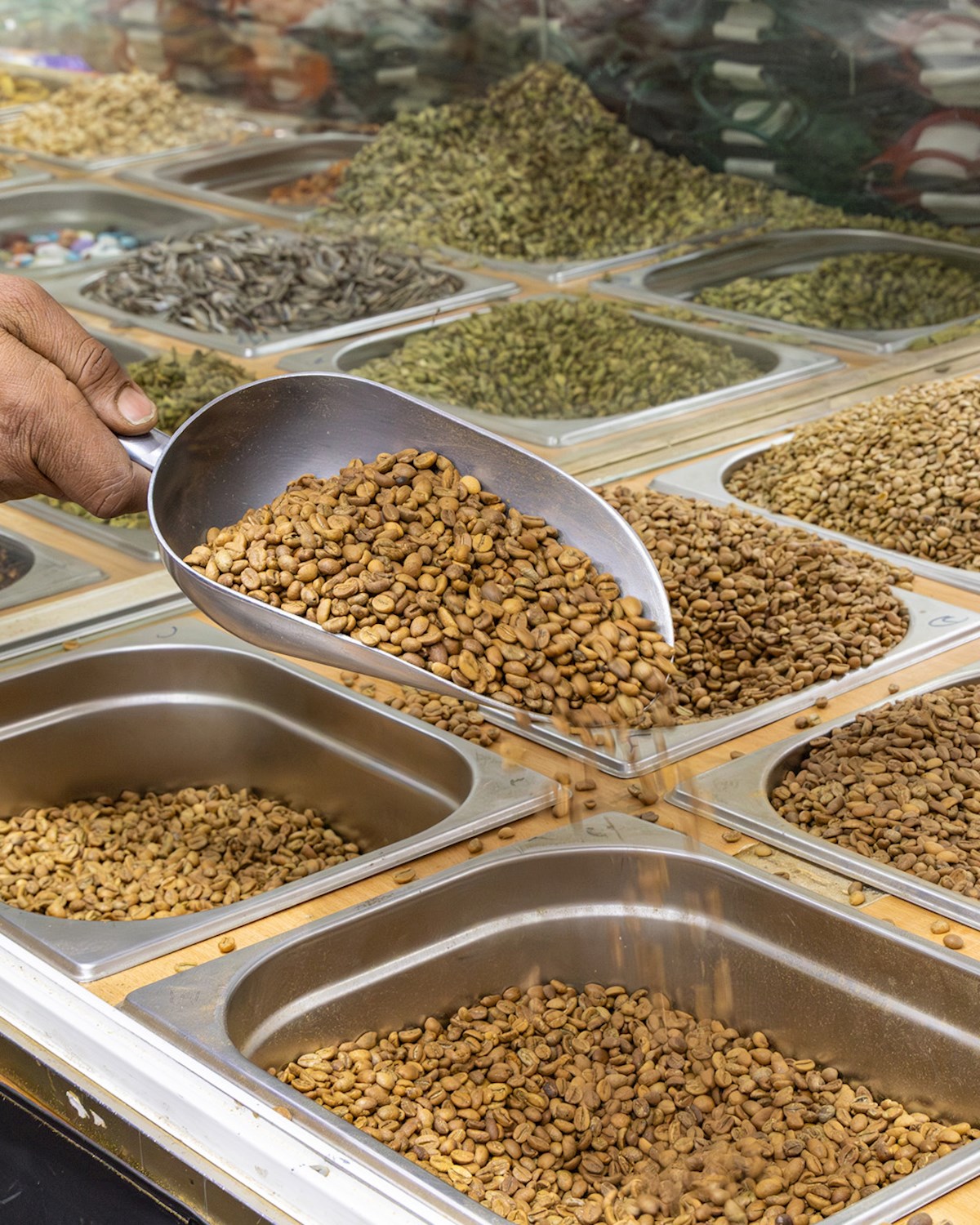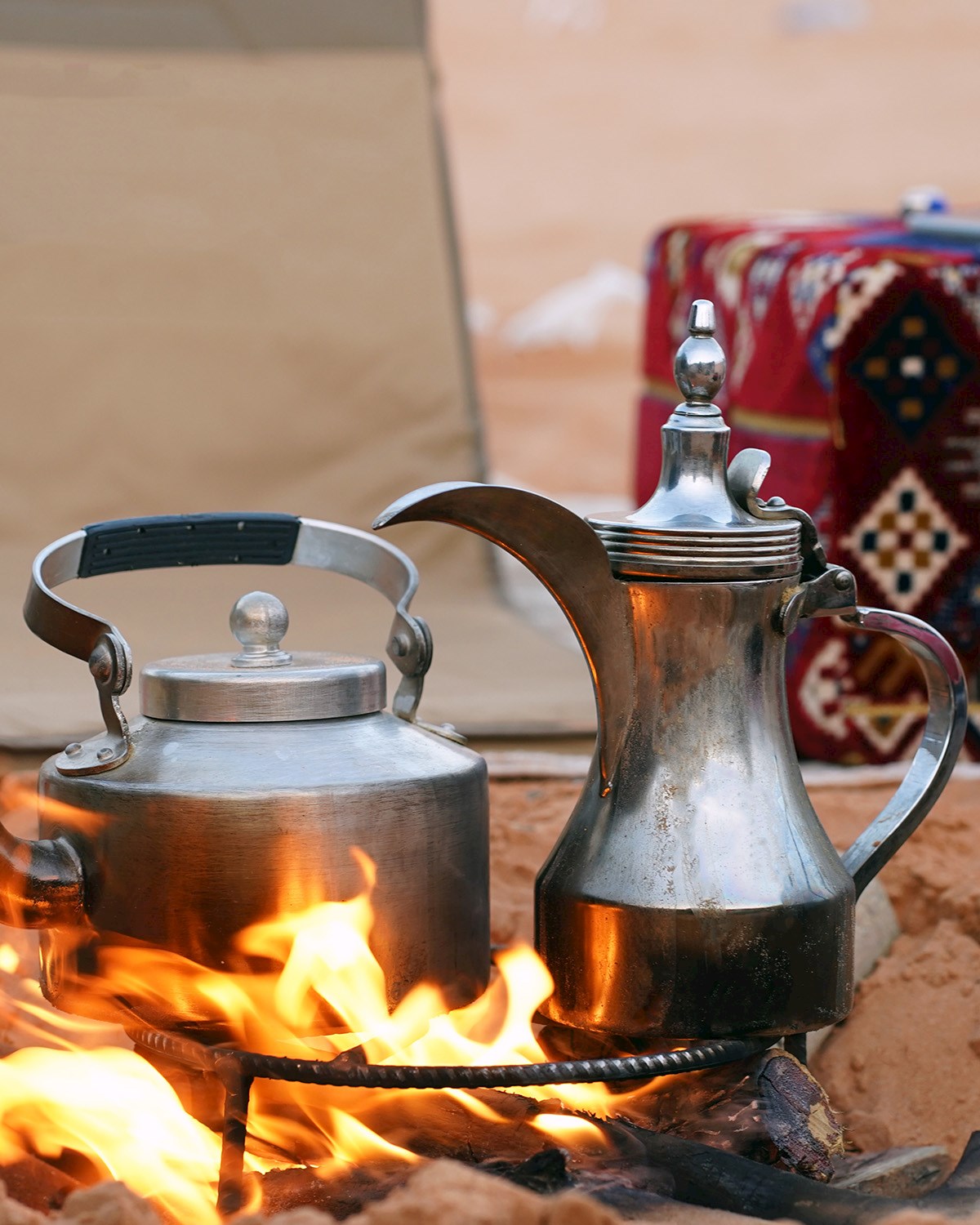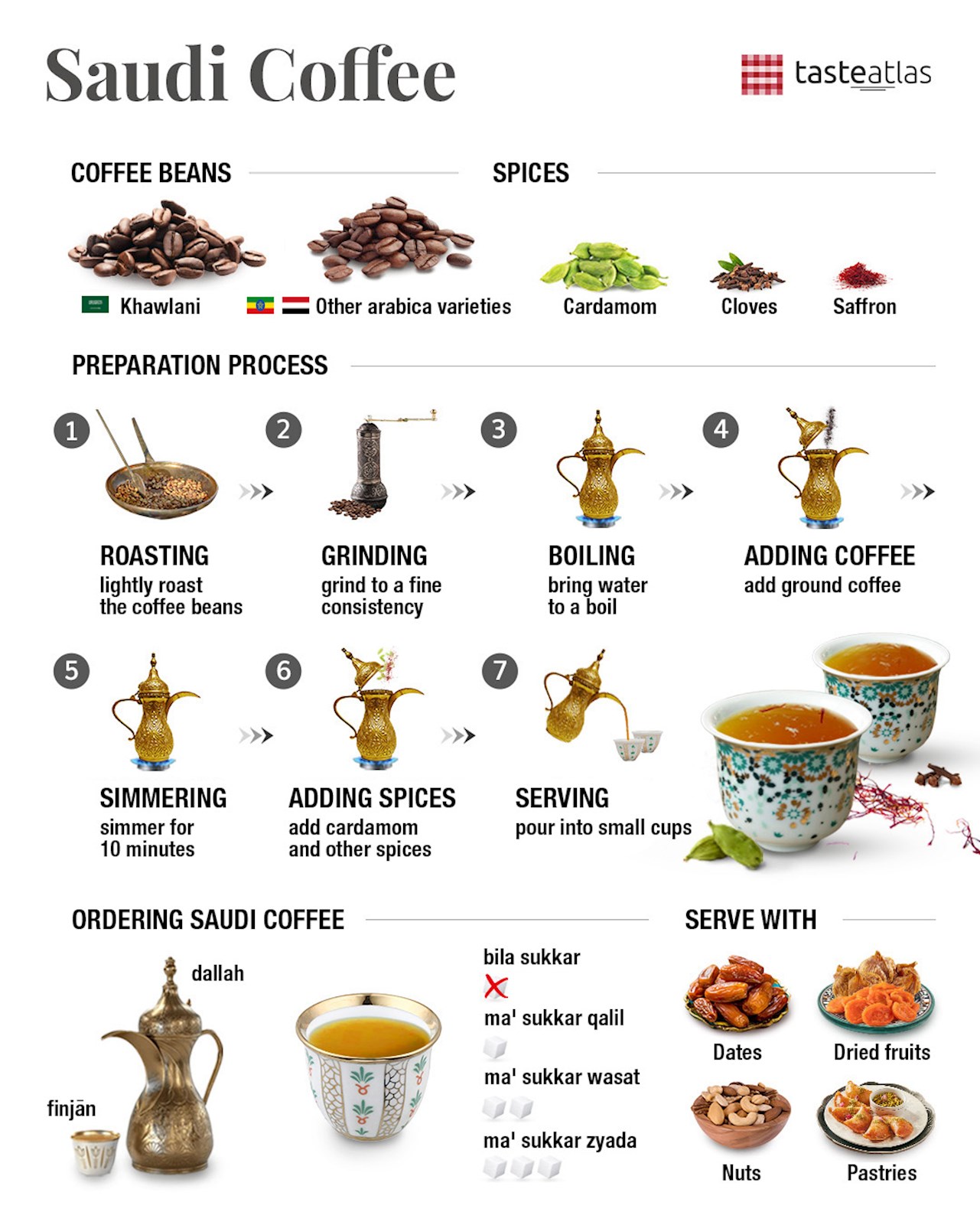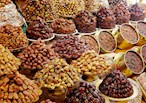Saudi coffee, known as "ghahwa", "gahwa" or "qahwa" in Arabic, is more than just a beverage - it's a cultural symbol, a gesture of hospitality, and a tradition that spans centuries. This unique coffee preparation method is celebrated for its distinctive flavor, ceremonial presentation, and the deep social connections it fosters.
How did we start drinking coffee?
 Credits: shutterstock
Credits: shutterstock
The exact origin story of coffee is not known, but there are many legends. One especially popular tale speaks of a Yemeni goat herder in Ethiopia named Kaldi, who sometime in the mid-800s observed his goats exhibiting unusual energy after consuming berries from a particular tree. Intrigued, Kaldi tried the berries himself and discovered their stimulating effect.
What we do know as a fact is that first first evidence of coffee drinking in Arabian Peninsula comes from Sufi monasteries in Yemen. From there, it spread to Mecca and the rest of the Middle East. Coffee houses, or qahveh khanehs, began popping up across the region, becoming vibrant social hubs for conversation, poetry readings, and even chess matches.
By the 16th century, coffee had reached the Ottoman Empire, where it became even more deeply woven into society. The Ottomans established the world's first coffee house in Istanbul, a trend that would later sweep across Europe. Coffee thus transitioned from an Arabian secret to a global phenomenon, forever altering beverage cultures worldwide.
The Art of Brewing
 Credits: shutterstock
Credits: shutterstock
The preparation of Saudi coffee is an art form in itself. Traditionally, in order to prepare Arabic coffee, meticulously chosen Arabica beans sourced from Saudi Arabia (Khawlani beans), Yemen or Ethiopia are roasted to varying degrees, depending on the desired strength and flavor profile. In Saudi Arabia, as opposed to other neighboring countries, they are roasted a bit lighter, which results in higher caffeine share, yellowish look and somewhat bitter taste.
The centerpiece of the brewing process is the "dallah", a stunning pot crafted from brass or silver. Often adorned with intricate designs, the dallah is not just functional but a symbol of Saudi (and Arabic) coffee culture itself. Water and the ground coffee beans are poured into dallah, along with cardamom, the most common accompaniment. Depending on the regional and personal preference, one might favor additional spices like saffron or cloves, infusing a unique twist to the flavor profile.
The true skill lies in the gentle heating process, which takes at least 10 minutes. The water is brought to a simmer, never a full boil, as this can affect the delicate taste. The sugar is added first, and after that the ground coffee beans. Finally, cardamom powder (and saffron and cloves) is added to the mix, and stirred. The resulting brew is a strong and concentrated concoction, ready to be enjoyed black or with added sugar.
A Ritual of Hospitality
 Credits: shutterstock
Credits: shutterstock
The serving of Saudi coffee is more than just pouring a drink; it's a ceremonial act steeped in the core value of Saudi hospitality. The most honored guest is served first, receiving a small amount of the potent brew in a finjān, a small handle-less cup. Traditionally, the finjān is only filled a quarter of the way, allowing for multiple refills throughout the gathering. Refusing a refill is considered impolite, but a gentle shake of the hand after a few rounds politely signals that you've had your fill.
 Credits: shutterstock
Credits: shutterstock
Dates, dried fruits, nuts, qatayef, ma'amoul, baklava or even lokum (Turkish delight) are often offered alongside the coffee. These sweet treats provide a delightful contrast to the strong coffee, creating a balanced taste experience.



